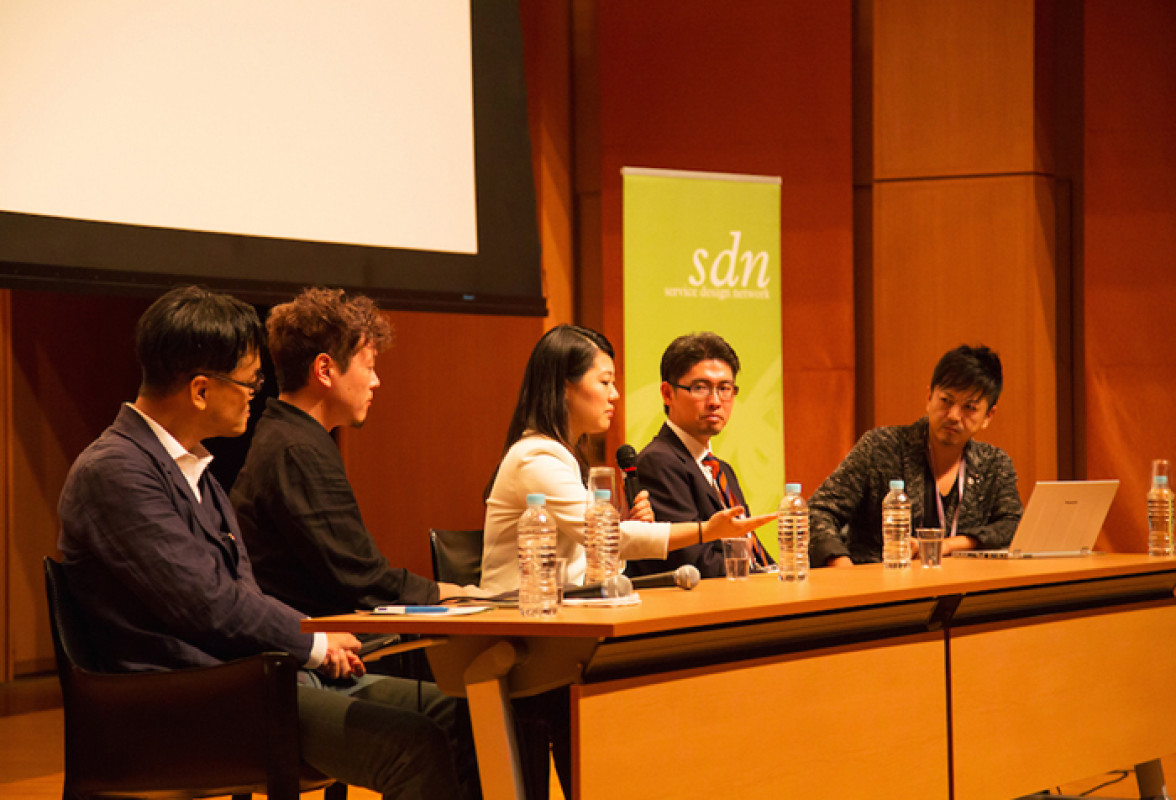From the business side, there were not only digital service providers, but also product manufacturers such as car manufacturers and audio- visual product manufacturers. The conference was held jointly with the International Conference on Serviceology (ICServ2014) of the Society for Serviceology.
Prof. Birgit Mager, president of Service Design Network, pre- sented the keynote to the audience. Then, Mr. Takemoto from Kokuyo Furniture Co. Ltd., a large furniture manufacturer in Japan, spoke about a collaboration space that they had produced. He mentioned that they created this space as a prototype for their new business and they were in the process of evaluating it. Mr. Tanaka, design lead of IDEO Tokyo, introduced the projects SF72, IDEO. ORG, and OpenIDEO. He illustrated IDEO’s various faces. Ms. Gibo, who is the managing director of Noom Japan, gave the third speech. Noom produces smartphone applications for those on a diet. During their customer research they found out how difficult it is for people to stick to their diet. So they started to design an application to help support people. The final speaker was Mr. Yamaguchi, the president of Insightforce Inc., a brand consulting agency. He explained how to construct a brand strategy from a customer experience viewpoint. In Japan, a CEO’s brand strategy is more understandable than service design strategy, even though both of them mean similar things, so his story was useful for the audience.
During the panel discussion, moderated by Mr. Hironori Iwasa (a representative of SDN Japan), Mr. Iwasa asked the speakers about running projects, how to develop business models from scratch and how much involvement and responsibility to business is required when participating in projects.
We considered that not only the success stories but also their failures and conflicts would be useful for the audience. At the afterparty, the participants could meet and exchange experiences.




Share your thoughts
0 RepliesPlease login to comment